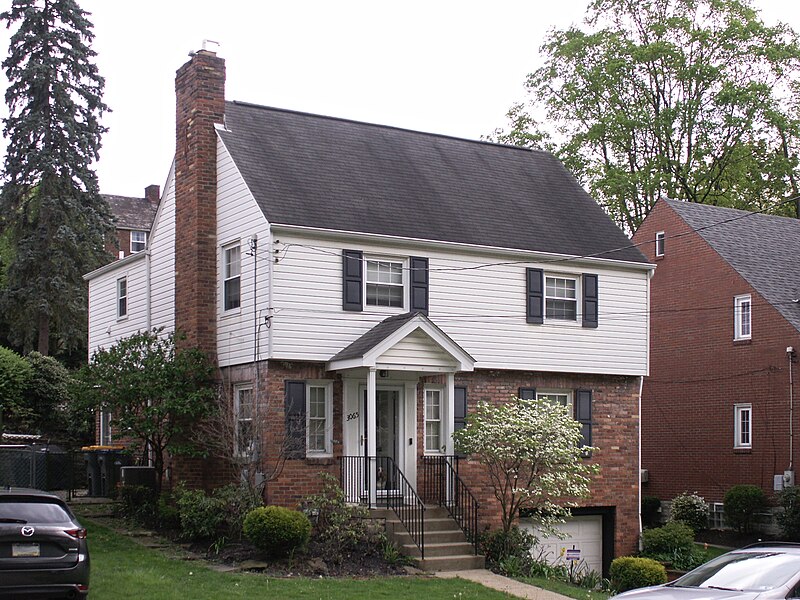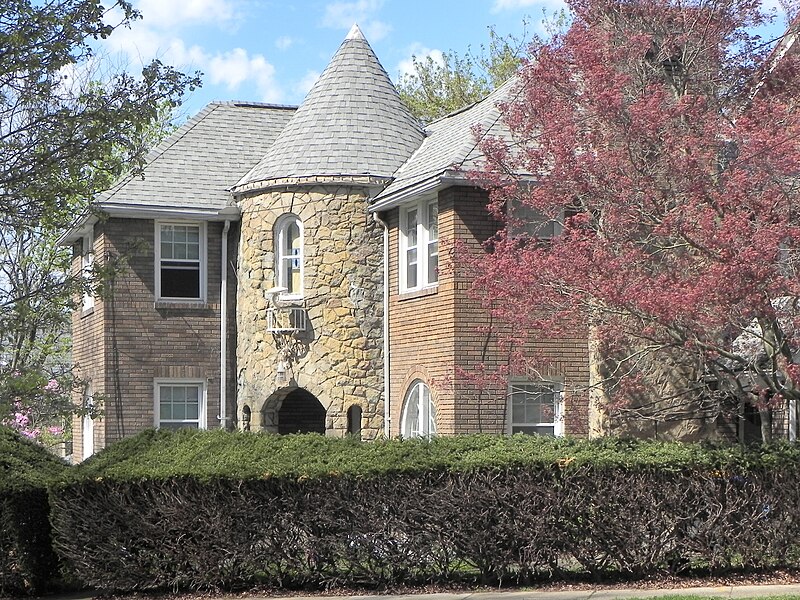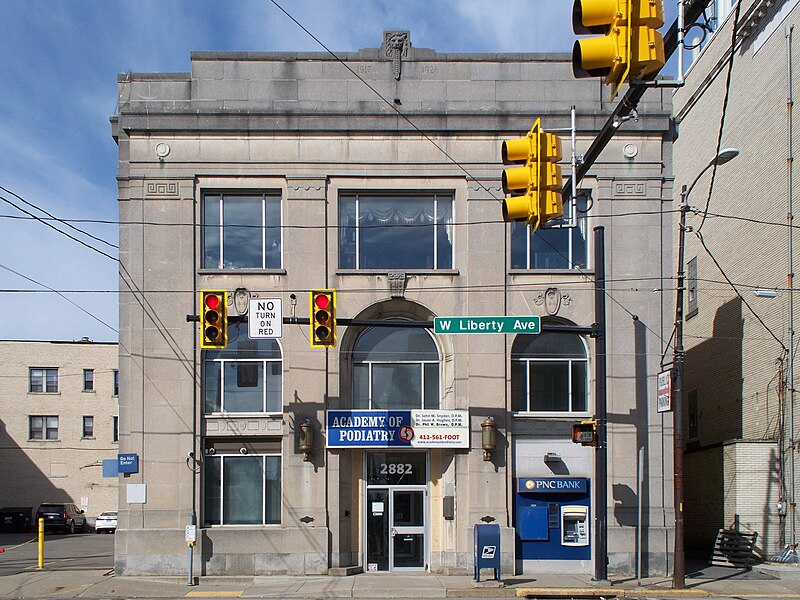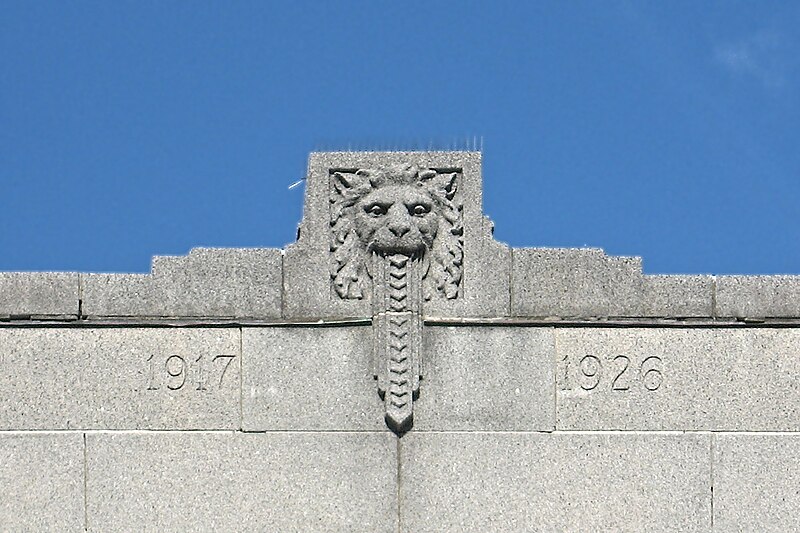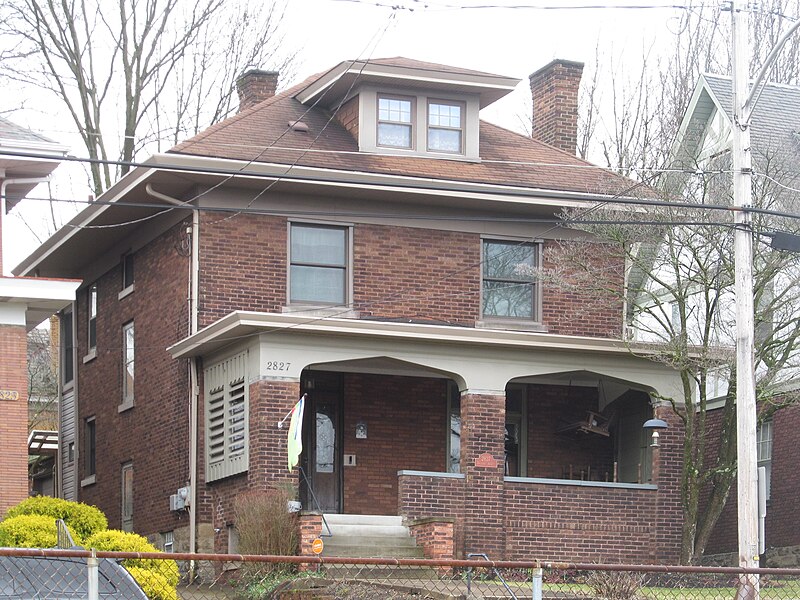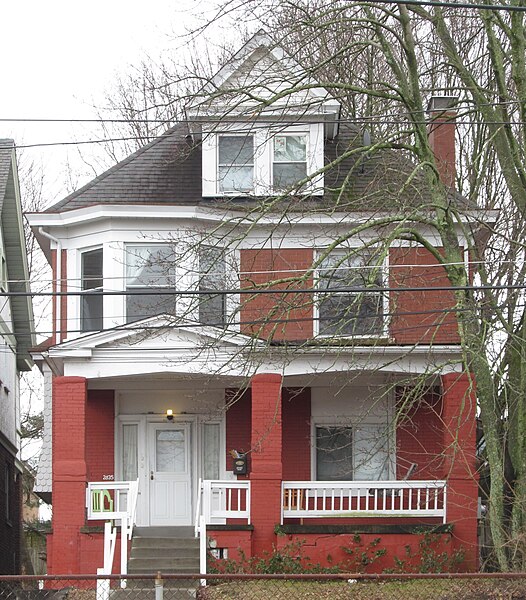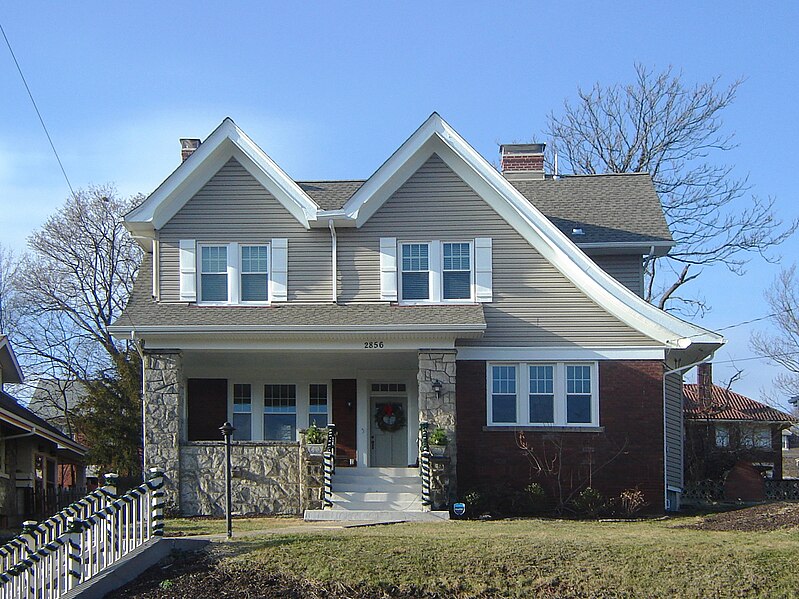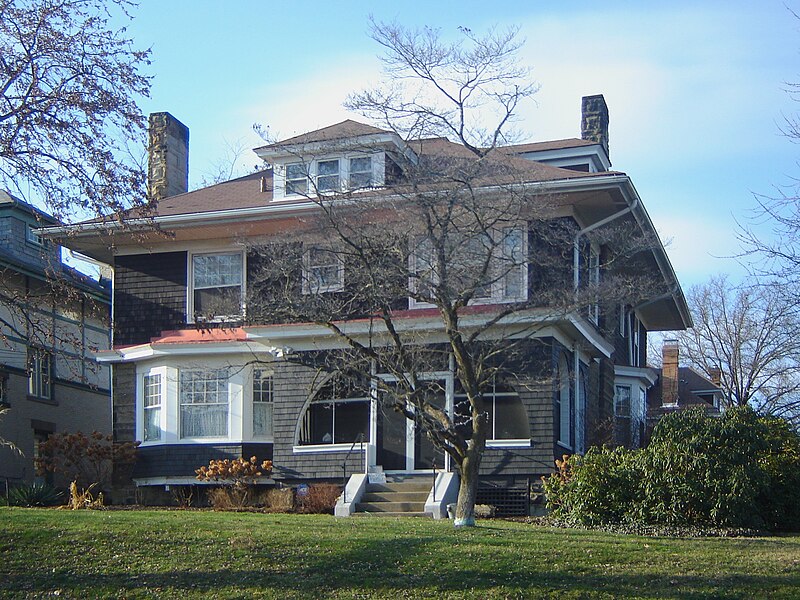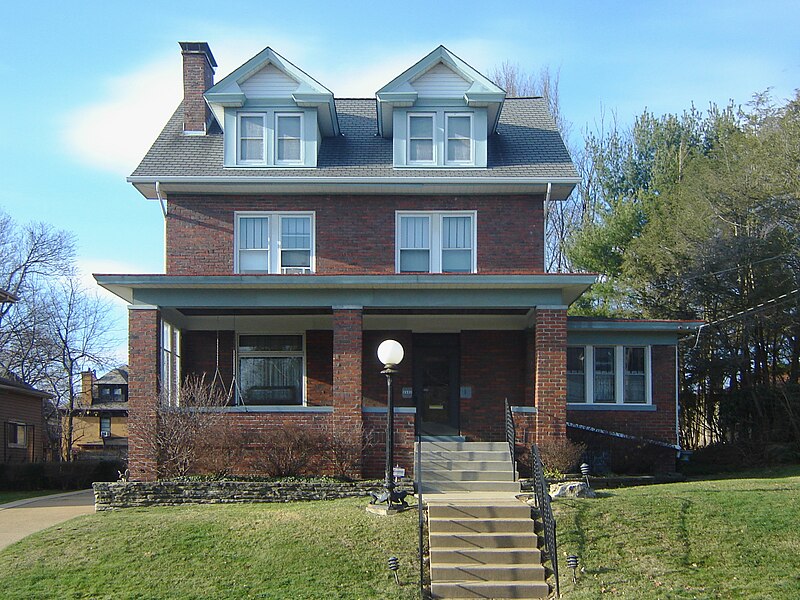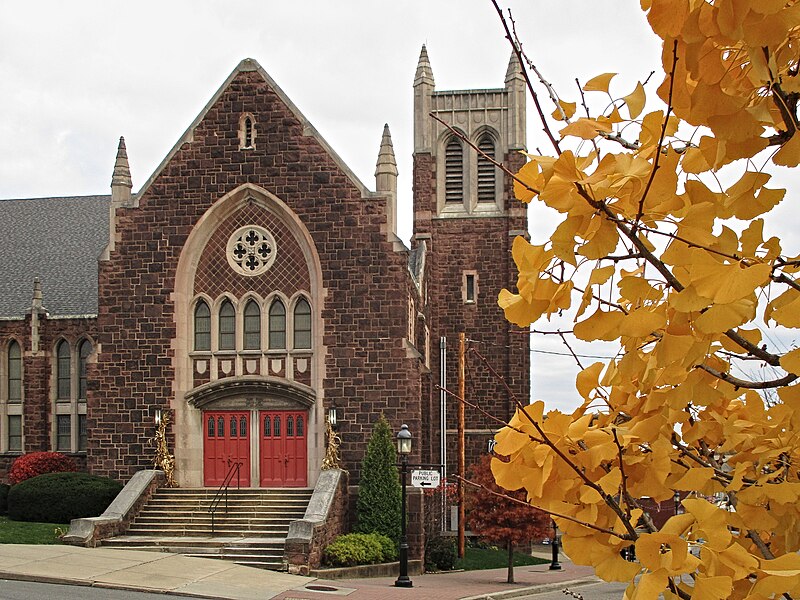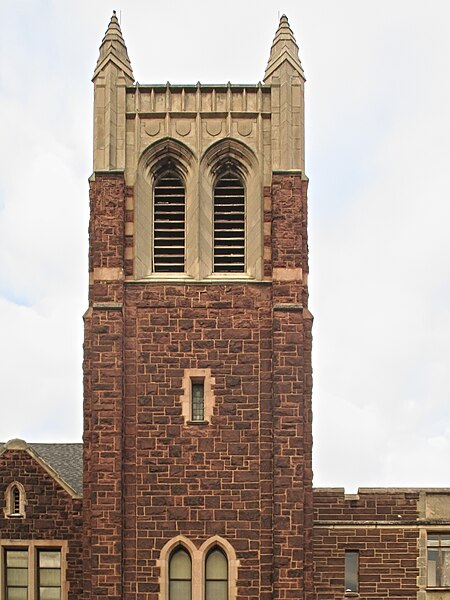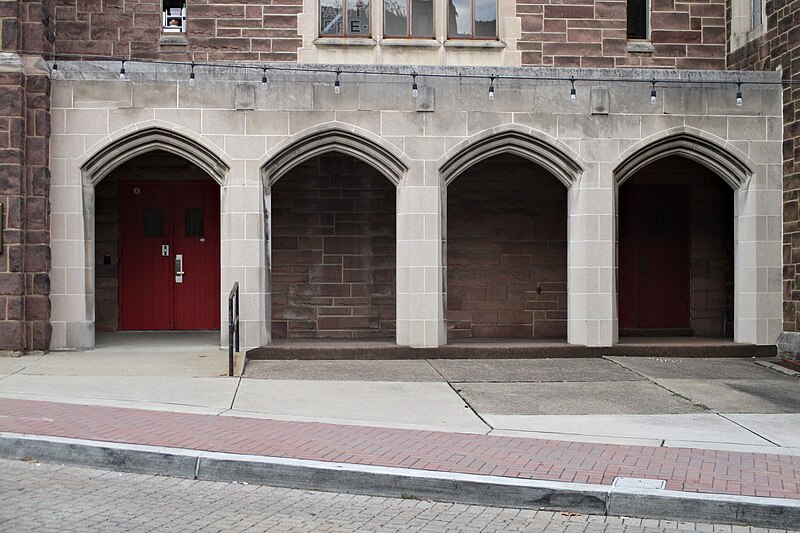
The Dormont Park plan was laid out in the late 1920s along three “mere” streets—Windermere, Earlsmere, and Grassmere Avenues, each a block long, along with the intersecting parts of Dormont and Kelton Avenues. Just before the Second World War, the Bupp-Salkeld Company added a row of thirteen houses on Dwight Avenue, parallel to the meres. They are mostly well preserved, and they make up a small museum of middle-class styles at the end of the interwar era.
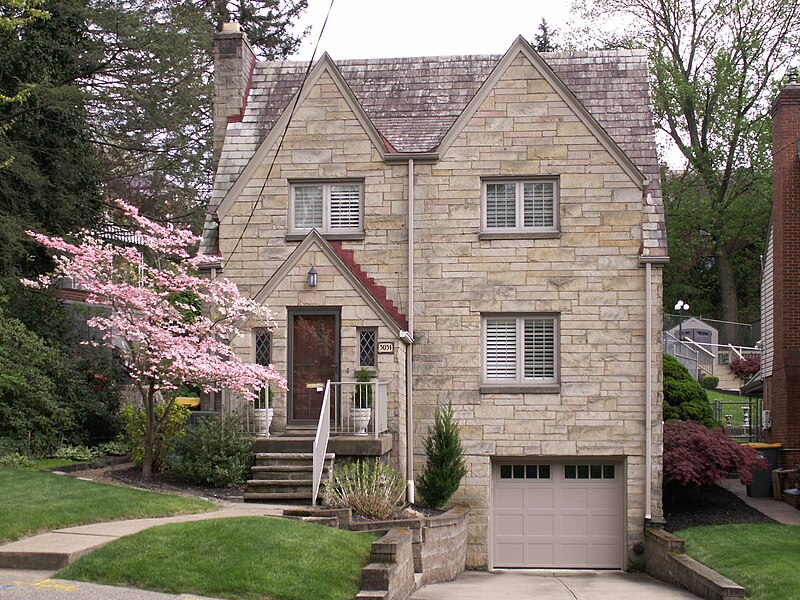


It would look better with real shutters, but the stonework is still outstandingly picturesque.






